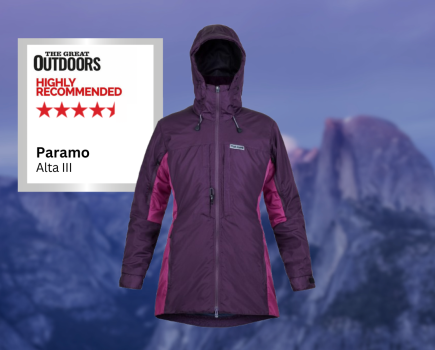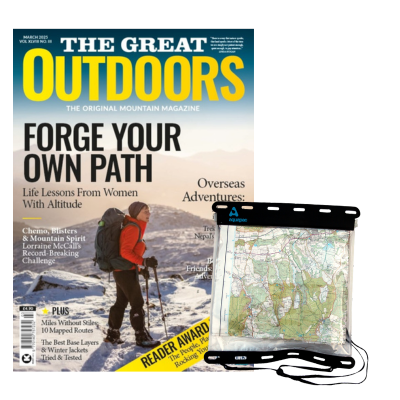This is the world’s first ‘mountainproof’ phone. And what a curious product it is. I’ve been using this phone for around a month, so this review should be considered a ‘first look’ and I’ll update in three months time once I’ve really had chance to abuse it!
A bit of background. Quechua were working on an app for your walking, until the realised there was a missing element, namely a phone. So the designers set out to produce a phone that can stand up to harsher conditions, hot and cold, a long battery-life – enough for a weekend – and a rugged, bounce and water resistant design. They also wanted to add an altimeter and barometer. It’s a joint venture with Archos.
So how is it?
The hardware
Well the first thing you notice taking it out of the box is the size – this is a hefty phone. There’s a 5” (6.5cm x 11cm) screen with a 640 x 480 pixel resolution, it’s pretty big, especially when you bear in mind that smaller tablets usually have 7” screens. It means it is pretty good for mapping software and doing some reading (yes, I’m referring to The Great Outdoors magazine on Android – gratuitous plug).
The overall size of the Quechuaphone 5.0 is 15.2cm x 8.5cm. By contrast my iPhone 5S, with the Lifeproof case I use is 14cm x 6.7cm. It’s big. And heavy weighing in at 244g (my iPhone with case is 142g). But it is very sturdy, with a steel plate back and built to withstand a fall of 80 cm – which is out of your pocket basically. There’s a thick glass too, which bounced off brick when I dropped it. It’s also built to: “withstand rain, mud, dust and snow”. I’ve showered it from a watering can without any problems at all for a couple of minutes. It is to IP54 standard that isn’t the highest and not designed for total immersion. This is partly because of the ports for SD and MicroSIM cards, and the headphone and USB port, are covered, but not totally sealed.
For me, the most impressive feature is the battery life of 3500 mAh. This means that having it on in your bag, it lasts the whole weekend – something I’ve tested. Quechua claims 22 hours of talk time – something I’ve not tested. This is hugely impressive for a start. I’ve found that when I’m out walking, the battery life on my iPhone is severely affected by the cold, and this just didn’t happen, or not nearly as noticeably as my iPhone (insulated iPhone protection cases next please!).
The camera is just OK – fine for your summit selfies, but loses quite a lot of definition on the zoom (as most cameras do). There’s also a slight delay between hitting the button and taking the pic – it’s a software problem, annoying but not a deal breaker. Have a look at the photos below. However, I’m going to replace the camera software for FV5 and see if that improves it. It’s a 5MB at the back and 2MP at the front (for those selfies), and there’s also a flash and it takes videos at 720p.
Here’s a picture taken with a standard camera software (that’s Roscoe, my dog)
And this is at 75% zoom
The software
It runs Android 4.1.2 (we’re now on 4.4 and 4.1 came out in July 2012) and is powered by Quadcore processor at 1.2Ghz. Now this means nothing to me – but from a person who knew shrugged and said it’s ‘fine’. There a 4MB storage but a slot of a MicroSD card.
The interesting part here is a barometer, altimeter and compass. You’ll need to download the right apps (we’ll come on to those again soon) to make best use of those.
Other than that, anyone used to an Android phone will pick it all up immediately. It’s pretty intuitive.
Conclusion
I’m very impressed with this phone. The big question is, of course, with excellent waterproof cases now available for your smartphone, do you need a ‘mountainproof’ phone. I think that Quechua have been clever with the size and, contrary to what I initially thought, the 5” screen is actually a benefit, for mapping especially – but off the mountain it’s a bit big to carry around. But the biggest advantage for me is the battery that doesn’t run out after three days, or, more importantly, die when it feels the cold – reliability is essential on the mountain. Also, for £200 it’s pretty good value. It’s not the highest spec, nor the latest software, but I’d expect it to enjoy a newer version at some point.
I’ll be revisiting this review in three months and we’ll see how it performs on more trips and in daily use.
Available from:
http://www.decathlon.co.uk/quechuaphone-50-id_8294081.html
And finally here’s a heartwarming promotional video from Decathlon:
By Daniel Neilson








